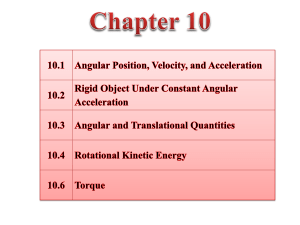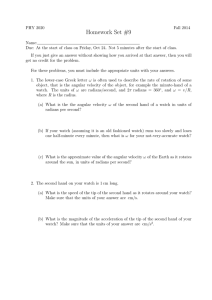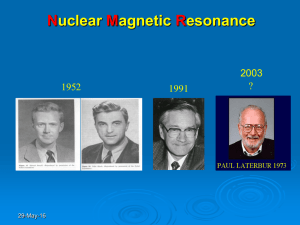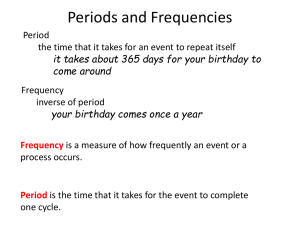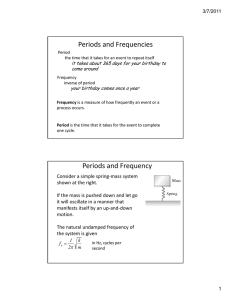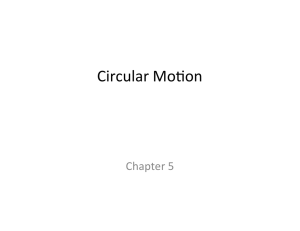HST.584 / 22.561 Problem Set #1 Solutions
advertisement
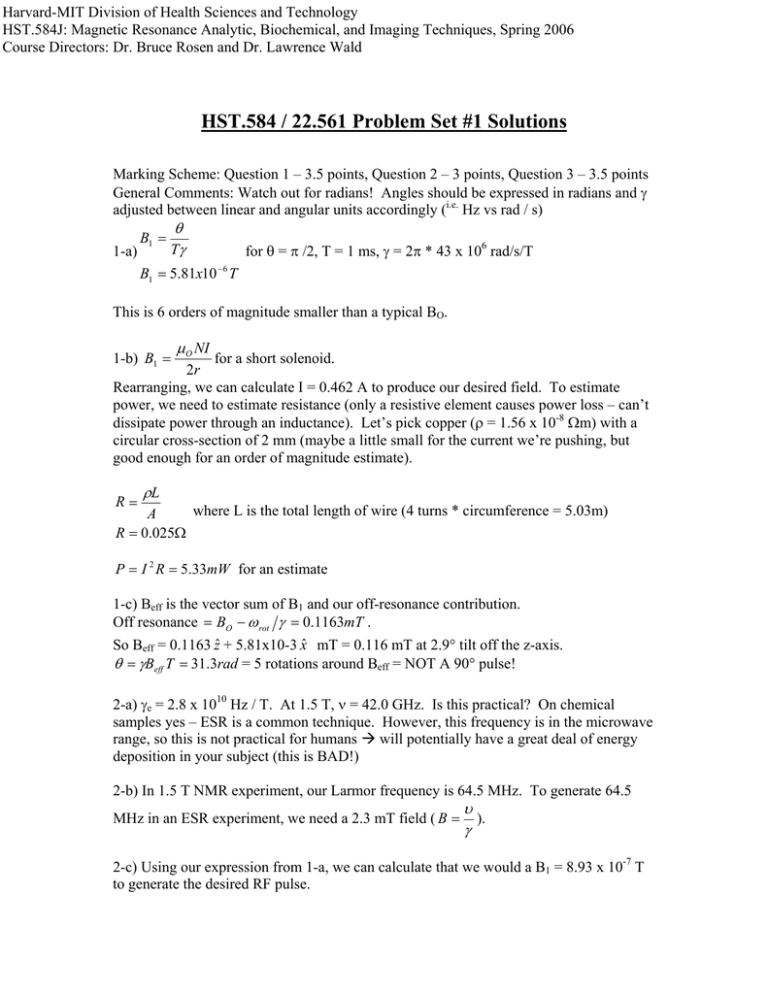
Harvard-MIT Division of Health Sciences and Technology HST.584J: Magnetic Resonance Analytic, Biochemical, and Imaging Techniques, Spring 2006 Course Directors: Dr. Bruce Rosen and Dr. Lawrence Wald HST.584 / 22.561 Problem Set #1 Solutions Marking Scheme: Question 1 – 3.5 points, Question 2 – 3 points, Question 3 – 3.5 points General Comments: Watch out for radians! Angles should be expressed in radians and γ adjusted between linear and angular units accordingly (i.e. Hz vs rad / s) 1-a) B1 = θ Tγ for θ = π /2, T = 1 ms, γ = 2π * 43 x 106 rad/s/T B1 = 5.81x10 −6 T This is 6 orders of magnitude smaller than a typical BO. 1-b) B1 = µ O NI for a short solenoid. 2r Rearranging, we can calculate I = 0.462 A to produce our desired field. To estimate power, we need to estimate resistance (only a resistive element causes power loss – can’t dissipate power through an inductance). Let’s pick copper (ρ = 1.56 x 10-8 Ωm) with a circular cross-section of 2 mm (maybe a little small for the current we’re pushing, but good enough for an order of magnitude estimate). R= ρL where L is the total length of wire (4 turns * circumference = 5.03m) A R = 0.025Ω P = I 2 R = 5.33mW for an estimate 1-c) Beff is the vector sum of B1 and our off-resonance contribution. Off resonance = BO − ω rot γ = 0.1163mT . So Beff = 0.1163 ẑ + 5.81x10-3 x̂ mT = 0.116 mT at 2.9° tilt off the z-axis. θ = γBeff T = 31.3rad = 5 rotations around Beff = NOT A 90° pulse! 2-a) γe = 2.8 x 1010 Hz / T. At 1.5 T, ν = 42.0 GHz. Is this practical? On chemical samples yes – ESR is a common technique. However, this frequency is in the microwave range, so this is not practical for humans Æ will potentially have a great deal of energy deposition in your subject (this is BAD!) 2-b) In 1.5 T NMR experiment, our Larmor frequency is 64.5 MHz. To generate 64.5 MHz in an ESR experiment, we need a 2.3 mT field ( B = υ ). γ 2-c) Using our expression from 1-a, we can calculate that we would a B1 = 8.93 x 10-7 T to generate the desired RF pulse. 3-a) n↓ n↑ = exp( − γBh K BT ) is the expression for the difference in spin population levels based on a Boltzmann distribution (again, watch your units for γ and h – if you use one in angular form, they both must in angular form). Field Strength (T) 7.0 3.0 1.5 Ratio for 1H 0.99995 0.99998 0.99999 Ratio for 13C 0.99999 0.999995 0.999997 So net magnetization increases with field strength, but we are still dealing with incredibly small signals! 3-b) If we re-arrange our initial expression, to get 1:2 ratio of spins, we need temperatures of 20.6 mK for 1H and 5.2 mK for 13C. 3-c) For 1H, we’d need a field of 9.84 x 104 T to attain a 1:2 ratio of spins. For 13C, we’d need a field of 3.95 x 105 T. Clearly, these are not attainable fields in a laboratory setting.

